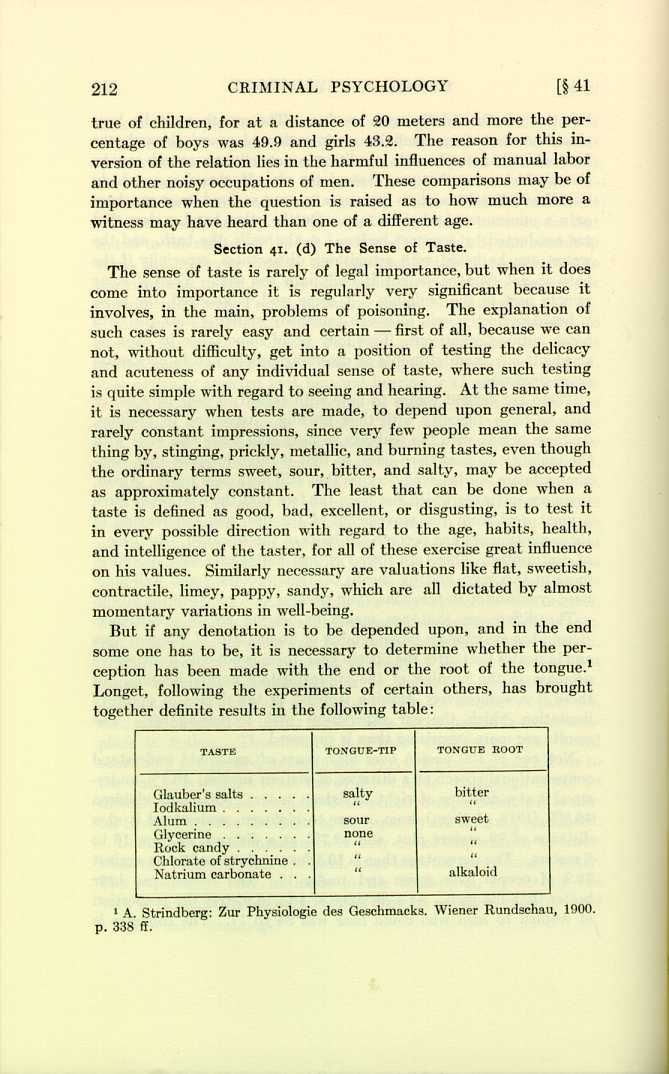| Topic I. OF SENSE-PERCEPTION. Criminal Psychology: a manual for judges, practitioners, and students | ||
Section 41. (d) The Sense of Taste.
The sense of taste is rarely of legal importance, but when it does come into importance it is regularly very significant because it involves, in the main, problems of poisoning. The explanation of such cases is rarely easy and certain—first of all, because we can not, without difficulty, get into a position of testing the delicacy and acuteness of any individual sense of taste, where such testing is quite simple with regard to seeing and hearing. At the same time, it is necessary when tests are made, to depend upon general, and rarely constant impressions, since very few people mean the same thing by, stinging, prickly, metallic, and burning tastes, even though the ordinary terms sweet, sour, bitter, and salty, may be accepted as approximately constant. The least that can be done when a taste is defined as good, bad, excellent, or disgusting, is to test it in every possible direction with regard to the age, habits, health, and intelligence of the taster, for all of these exercise great influence on his values. Similarly necessary are valuations like flat, sweetish, contractile, limey, pappy, sandy, which are all dictated by almost momentary variations in well-being.
But if any denotation is to be depended upon, and in the end some one has to be, it is necessary to determine whether the perception has been made with the end or the root of the tongue.[1] Longet, following the experiments of certain others, has brought together definite results in the following table:
In such cases too, particularly as diseased conditions and personal idiosyncrasies exercise considerable influences, it will be important to call in the physician. Dehn is led by his experiments to the conclusion that woman's sense of taste is finer than man's, and again that that of the educated man finer than that of the uneducated. In women education makes no difference in this regard.
| Topic I. OF SENSE-PERCEPTION. Criminal Psychology: a manual for judges, practitioners, and students | ||
